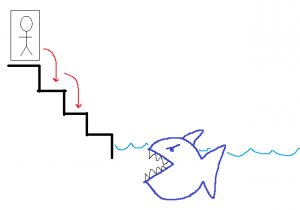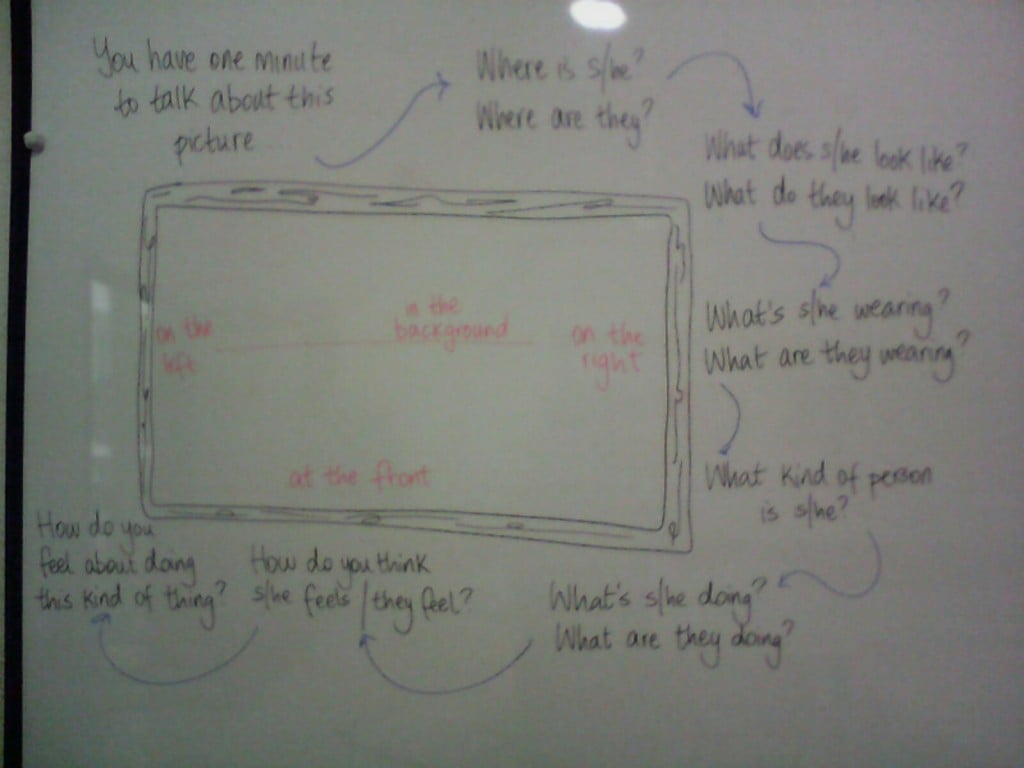Introducing new lexis with YLs
Introducing new vocabulary can often be a tedious, rote-learning affair: the teacher holds up a flashcard, elicits what it shows, models the correct pronunciation, the learners repeat and we move on to the next word. Whilst this is an effective way of exposing our learners to single words, we can do so much more to engage them and make the process of assimilating new lexis much more enjoyable.
Take for example, the flashcard below from Macmillan, “ball”. This may be as much as we want our learners to take from the flashcard, but with a little encouragement we can build them to saying, “It’s a big, orange and green ball” and more!
 So how can we build this sentence with our young learners? It happens something like this:
So how can we build this sentence with our young learners? It happens something like this:
Teacher (holding up flashcard): What’s this?
Learners: Ball
Teacher: It’s a ball. (mimes for learners to repeat)
Learners: It’s a ball.
Teacher (whispering): It’s a ball.
Learners (whispering): It’s a ball.
Teacher (shouting): It’s a ball.
Learners (shouting): It’s a ball.
Teacher: Is it big or small? (with appropriate hand gestures)
Learners: Big.
Teacher: It’s a big ball. (gestures for learners to repeat – and again the process of drilling with different voices: whispering, shouting, slowly, faster, with a robotic voice, with a squeaky voice)
Teacher: What colour is it?
Learners: Orange and green.
Teacher: It’s a big, orange and green ball. (and again the teacher drills the sentence in a number of different voices, both chorally and individually)
We’ve now moved learners away from a single word to a full sentence, using correct adjective order and grammatical structure. As learners become accustomed to this style of introducing new lexis, they begin responding more fully when asked and within a short time will automatically respond with “It’s a…”
But this style of lexical exposure can still be dull for our learners – and this is where a little imagination can have a very positive role.
 It’s a sandwich. But what’s in it? Elicit tomato and lettuce and drill, “It’s a tomato and lettuce sandwich”. Then ask them if there are spiders in the sandwich – after an initial, “no! Urgh!”, someone’s bound to shout “Yes!” Then they can come up with their own ideas – anything goes if it’s in a full sentence. What’s important is that they’re repeating the core lexis – by the end of the lesson they will have said sandwich who knows how many times…and it’ll stick.
It’s a sandwich. But what’s in it? Elicit tomato and lettuce and drill, “It’s a tomato and lettuce sandwich”. Then ask them if there are spiders in the sandwich – after an initial, “no! Urgh!”, someone’s bound to shout “Yes!” Then they can come up with their own ideas – anything goes if it’s in a full sentence. What’s important is that they’re repeating the core lexis – by the end of the lesson they will have said sandwich who knows how many times…and it’ll stick.
Images from http://www.macmillanyounglearners.com/macmillanenglish/flashcards


